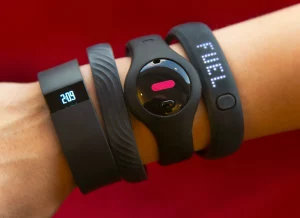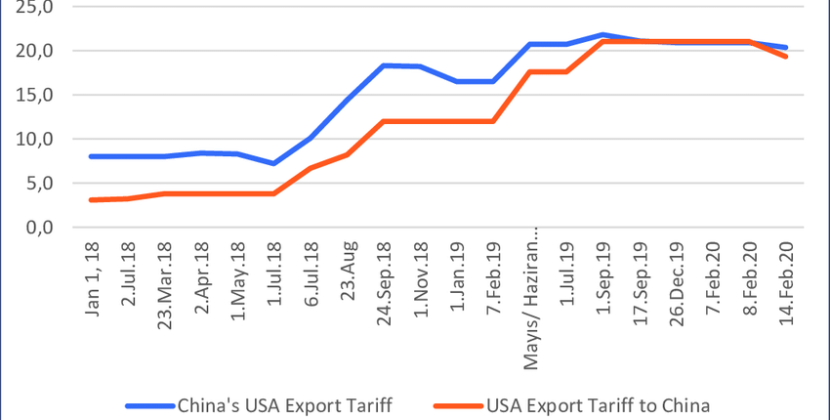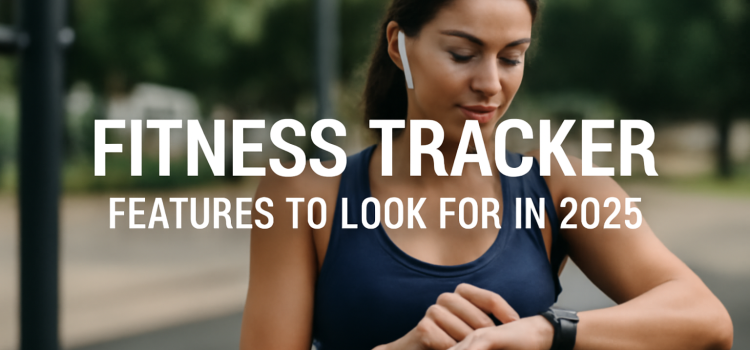
Introduction
As we step into 2025, wearable fitness tech has evolved beyond simple step counting. Today’s devices do much more than track distance. They watch our hearts, breathe with our bodies, and even Guide Our Workouts. With so many options, choosing advanced fitness trackers can feel overwhelming. This guide walks you through the top fitness tracker features to look for next year. You’ll learn how health monitoring, sleep tracking, heart rate sensors, GPS tracking, and more can support your goals. By the end, you’ll know exactly what to seek in the best fitness trackers 2025 to boost your health and fitness journey.
What Is a Fitness Tracker?
A fitness tracker is a small device you wear on your wrist, often called a wristband or watch. It uses sensors to measure movement, heart rate, and other body signals. The data goes to an app on your phone, where you can see your daily steps, calories burned, and workout stats. Modern trackers also monitor sleep, stress levels, and even blood oxygen. With smartwatch fitness models, you can receive calls and messages too. In 2025, these devices have bigger screens, longer battery life, and smarter apps that learn your habits.
Why Choose Advanced Features in 2025?
Basic trackers count steps and flights climbed. But advanced fitness trackers go further. They help you spot trends, prevent injuries, and sleep better. In 2025, more people use wearables for serious health insights. Thanks to improved sensors and AI, trackers can now screen for heart irregularities or flag early signs of fatigue. By choosing devices with the right features, you get more than numbers—you gain guidance. That means safer workouts, more restful nights, and a clearer view of your overall well-being.
Which Health Monitoring Features Matter?

The heartbeat of any great tracker is its heart rate sensors. Look for continuous monitoring that tracks beats per minute all day. Next, health monitoring extends to blood oxygen (SpO₂) and stress levels via heart rate variability. Some devices even offer electrocardiogram (ECG) readings for advanced heart screening. These insights can spot issues early and alert you if something seems off. In 2025, trackers will also measure skin temperature and hydration, giving a fuller picture of your health. Choose models that share data easily with your doctor or health app.
What to Look for in Activity and Exercise Tracking?
Whether you run, swim, or practice yoga, your tracker should adapt. GPS tracking is key for outdoor workouts. It maps your route, pace, and elevation. Inside, optical sensors detect movement accurately for cycling or weightlifting. Look for auto-detect features that start and stop workouts on their own. In 2025, trackers will guide you through strength training, showing reps and sets with on-screen prompts. Also, explore smart coaching programs that adjust your plan based on performance. This level of detail turns every session into a step toward your goals.
How Sleep and Recovery Tracking Help You Recharge

Sleep is as vital as exercise. The sleep tracking in 2025 can tell when you are in deep, light, or REM sleep. It even records disturbances like snoring or restlessness. Recovery features use sleep data plus resting heart rate to give you a “readiness score” each morning. This tells you if today is a day to push hard or take it easy. By respecting recovery, you avoid burnout and injury. Your tracker’s app may suggest breathing exercises or naps to boost your energy. Good rest means better workouts and a healthier you.
Why Connectivity and Battery Life Are Key
Great features matter little if your device dies mid-day or loses sync. In 2025, trackers with smartwatch fitness options offer LTE or 5G, letting you call or stream music without your phone. Bluetooth 5.2 ensures stable connections to headphones and apps. Battery life has also grown—some models last two weeks on a single charge. Fast charging means minutes plugged in gives hours of use. Look for water resistance at 5ATM or higher, so you can swim or shower without worry. A reliable tracker stays with you through every moment.
Table: Top Features in 2025 Fitness Trackers
| Feature | Why It Matters | Example Benefit |
|---|---|---|
| Continuous Heart Rate | Full-day health insights | Catch stress spikes early |
| SpO₂ & ECG | Advanced heart and oxygen monitoring | Early warning of irregular rhythms |
| GPS & Multi-Sport Tracking | Accurate outdoor and exercise data | Map runs, swims, and bike rides |
| Sleep & Recovery Scores | Optimized rest and training balance | Know when to train hard or rest |
| LTE/5G Connectivity | Phone-free calls and streaming | Jog without your phone |
| Long Battery Life | Less charging, more tracking | Track two weeks of activity |
| Smart Coaching | Personalized workout guidance | Adjust plans based on progress |
| Water Resistance | Worry-free swimming and showers | Wear in pool or rain |
Tips for Choosing Your Next Tracker

To find the best fitness trackers 2025, first set your priorities. Want health insights? Focus on ECG and SpO₂. Love running? Choose strong GPS and coaching features. If you value style, look at design and interchangeable bands. Always test the companion app for ease of use. Check that it syncs with your favorite health platforms, like Apple Health or Google Fit. Read user reviews for reliability under real conditions. Finally, consider cost versus benefit—sometimes mid-range models offer most top features at lower prices.
Conclusion
In 2025, fitness tracker features have leapt forward, offering deeper Health Monitoring, precise GPS tracking, and smarter sleep recovery insights. With wearable fitness tech, you can manage workouts, rest, and life itself with clear data at your wrist. By focusing on continuous heart rate, SpO₂, multi-sport modes, and reliable connectivity, you choose a device that truly supports your goals. Use our tips and feature table to find the perfect tracker. Step into the future of fitness and well-being—make every move count with the right tracker by your side.









